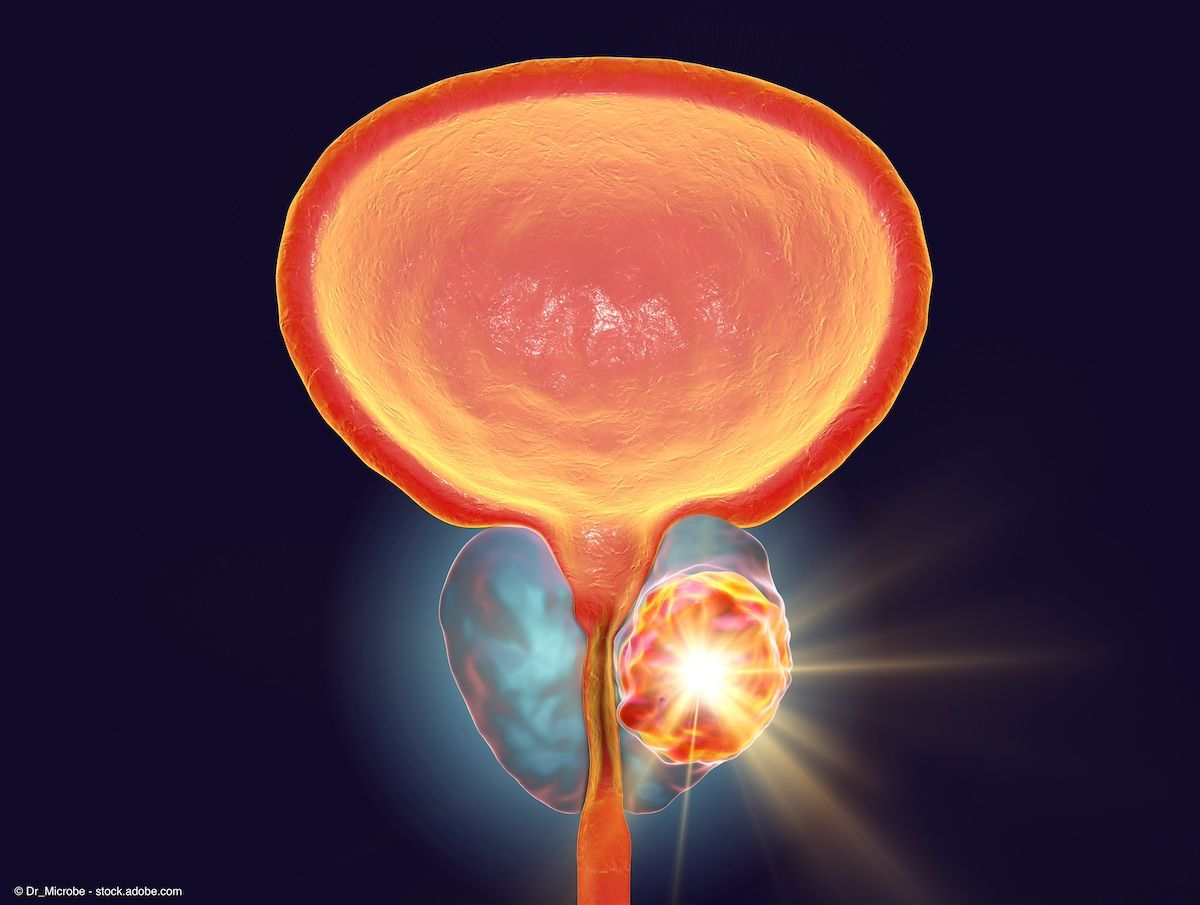Opinion
Video
Cedric Pobel, MD: Phenotypic and genomic analyses from PEACE-1 in de novo mCSPC
Author(s):
Key Takeaways
- The study identified five phenotypes in de novo metastatic castration-sensitive prostate cancer using immunochemistry and next-generation sequencing.
- Neuroendocrine phenotypes with AR-negative markers showed worse overall survival, though limited by small sample sizes.
"When we looked at the same phenotypic data, but focusing on each immunochemistry protein markers, we had 10 patients with AR negative tumor with clearly worse prognosis, and synaptophysin-positive and chromogranin A-positive patients also had a worse prognosis," says Cedric Pobel, MD.
In this interview, Cedric Pobel, MD, highlights the background and key findings from the study, “Phenotypic and Genomic Characterization of De Novo Metastatic Prostate Cancer: An Ancillary Study of the PEACE-1 Phase 3 Trial,” which was presented at the European Society for Medical Oncology (ESMO) Congress in Barcelona, Spain. Pobel is a medical oncologist and PhD student at Gustave Roussy Institute in Paris, France.
Video Transcript:
Could you describe the background for this study?
I'm here to present to you our results, presentation we made at a ESMO 2024, which was about the ancillary study of PEACE-1 trial, for which we had a phenotypic and genomic data in de novo metastatic castration-sensitive prostate cancer. We now have this new standard of care with triplet therapy, with the addition of abiraterone to castration and docetaxel that showed a benefit in overall survival in PEACE-1. The rationale of our study here was [that] we had one hypothesis, which was that an aggressive variant or neuroendocrine-like variant could be detected at diagnosis and associated with prognosis. We really need biomarkers and also prognosis factors for these patients with a new standard of care.
What were the key findings from this analysis?
For this study, we performed, for now, 2 main analyses, immunochemistry, first, with 10 markers, allowing us to define 5 phenotypes. AR low and high patients with AR positive and neuroendocrine marker-negative tumor, neuroendocrine phenotype with AR negative and neuroendocrine marker positive, amphicrine tumor with both AR positive and neuroendocrine marker [positive] and also double negative, so the opposite, AR and neuroendocrine negative. And secondly, we performed NGS, next generation sequencing, analysis with a restricted panel, rather than 1 exosome.
What we found in these patients, for the phenotypic analysis, we had 400 contributive patients, almost. We found that in terms of overall survival, we had 2 outliers, double negative, but with only 3 patients in this subgroup, so it's hard to draw a conclusion for them. At the bottom of the curve, we had this neuroendocrine phenotype with AR negative and neuroendocrine marker positive, which had a worse overall survival, but with only 5 patients, so again, limiting the interpretation for them. The bulk of patients that are AR low and had a high phenotype we had a similar overall survival, whereas patient with neuroendocine tumor has a slightly shorter overall survival.
When we looked at the same phenotypic data, but focusing on each immunochemistry protein markers, we had 10 patients with AR negative tumor with clearly worse prognosis, and synaptophysin-positive and chromogranin A-positive patients also had a worse prognosis. But surprisingly, we had a number of patients, almost 25% of them, having at least 1 neuroendocrine marker positive among synaptophysin, CD56, or chromogranin A-positive. All these patients had a worse prognosis, actually.
It is important to note also that apart from all this prognosis value, we didn't add any predictive marker for abiraterone response, so every patient benefits from abiraterone in this study in PEACE-1.
Secondly, for the genomic data, we found a similar number of alterations compared to previously published data in mCSPC with a few number of AR alterations, as expected in this castration-sensitive setting. Interestingly, we had patients with at least 1 gene altered among TP53, PTEN, or RB1. These patients had a worst prognosis, with an overall survival divided by 2. Only 9 patients harbored this signature, so only a few patients.
This transcription has been edited for clarity.
Newsletter
Stay current with the latest urology news and practice-changing insights — sign up now for the essential updates every urologist needs.

















